
People living in the era of the Internet often forget how much online selling owes the traditional retail.
Some of us got so used to buying products without the need to visit a “real” store that we started to treat conventional shops as a thing of the past.
But the thing is, regardless of how quickly ecommerce grows, more than 90% of consumer spending is still happening in the real world. The traditional retail remains the primary way of buying and, in fact, it still has a lot to offer to the world of online sales.
In this article, I'd like to show the brick-and-mortar strategies that can help every online business to increase its conversions. Here are the five lessons online retailers can learn from brick and mortar shops.
Lesson 1: Always greet your customer
The advantage of a traditional store over an online one is that the brick and mortar customer service starts at the very same moment when a customer enters the store.
“Welcome to Jerry’s!” - the store assistant materializes to greet a customer and provide all help they would need.
Such clerk can give the information about products, can help to choose the right model, will order a product if it’s missing, and - we can’t forget about that - they create an amazing shopping experience and build customer loyalty.
For many years, ecommerce websites were missing such clerks. Now, with the evolution of live chat apps, this has changed. Live chat allows starting a chat every time you think your website visitor might need help.
For example, when you see that they are stuck on a particular website, you can start a chat and help to choose the right product. You can also set up an automatic greeting that welcomes your visitor as soon as they enter your online store.
It works just the same way as a store clerk greeting in a traditional store and has an equally big impact on sales.
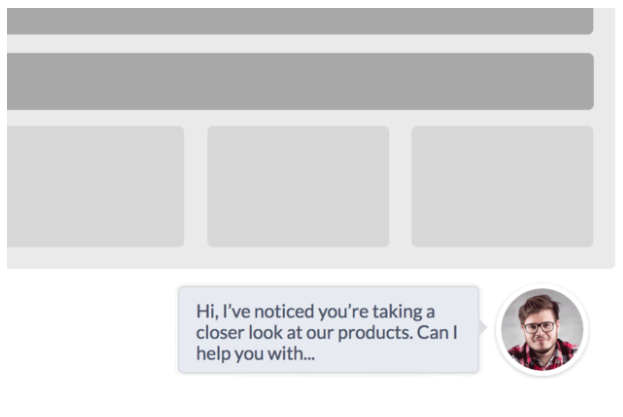
Lesson 2: Make your website informational
The reason why so many customers prefer traditional stores over online ones is that they allow you to touch and feel the product. They can feel product’s weight, measure it if needed, check out if they like fabrics and the color, decide whether it will meet their needs.
In an online store, in many cases, they guess.
How many times did you buy something thinking you’ll get a high-quality product for a fine price? Or just how many times you tried to make a purchase, but you couldn’t find the information you were looking for?
The second lesson you can learn from traditional stores is that customers require a lot of information about a product to make a purchase. You need to make sure that all information is on your website unless you want to talk with your confused customers by phone, a chat or an email.
Here’s an example. Let’s say you’re selling mattresses for beds and beds frames online. To make a purchase, your customers require information about which mattress fits which frame, how big the frame is, whether it’s double or single, what the measurements for each of those are.
It means that you need to make sure that apart from nice pictures, your website has to contain detailed descriptions of your products so your customers could feel that they know what are they buying.
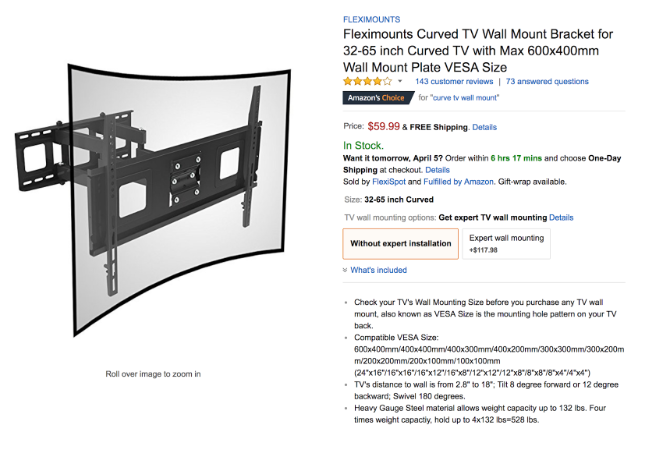
Lesson 3: Make data-driven decisions
Any brick and mortar store would be profitable without a precise sales tracking system. Every store has to be able to tell how much products there are left in stock and how popular specific products are. Thanks to that, stores can create promotions, sell more, and earn more.
Traditional stores often use POS software that allows to track data, see live reports of how employees are doing, what are the customers buying and to make sales more effective.
Wait a minute, you might say. The Internet gives a lot of opportunities to gather data about business and analyze it!
Well, let me surprise you.
According to Bi Survey, 58% of companies base at least half of their regular business decisions on gut feel or experience, rather than on data and information. It means that in the ecommerce area, there’s a lot of room for improvement in terms of data-driven decision making.
Starting with must-have tools like Google Analytics, there are a bunch of others that every marketer should be familiar with. There are inventory analytics, payment processing and website optimization apps, all that to make your business more profitable.
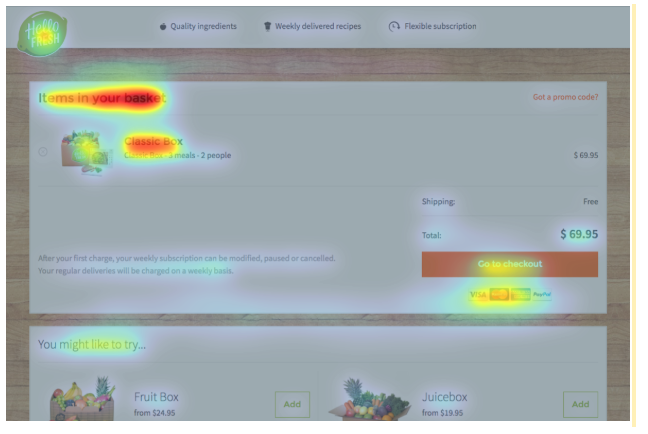
Lesson 4: Create a loyalty program
Loyalty programs were born in the 18th century as a way to reward customers for repeated purchases. Retailers back then concluded that the more gratitude for they show to their customers, the more eager they will be to revisit them.
This idea didn’t get old since then. Most of the traditional stores use to sweeten up deals with vouchers, coupons and loyalty program memberships. Thanks to that, their customers can take advantage of special offers and promotions, and their loyalty is boosted.
The good thing is that almost all steps that are done by traditional retailers can be replicated in the online world. You can still fuel affection of your customers by offering loyalty program memberships.
Make signing up easy (ask only for key information), promote the program on multiple channels, clearly explain how the reward system works like and track your progress. Thanks to that you will get more returning customers, but you will also attract new ones.
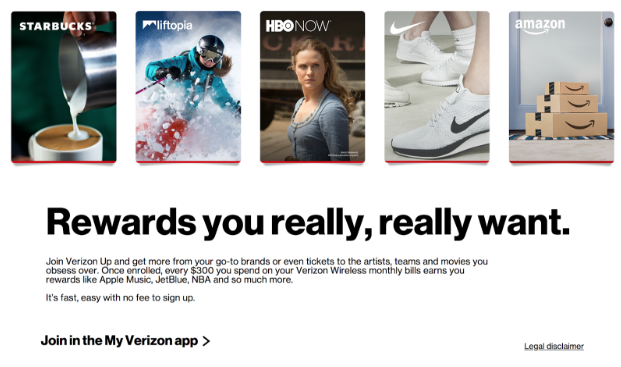
Lesson 5: Personalized recommendations
We all love the magic of a personal touch. We love it when we enter the nearest cafeteria, and a well-known barista greets us and starts to prepare our double-caramel pumpkin macchiato with the foam on top. We also love it when a store assistant helps us to choose the right bag for the dress we’re buying.
Personalization is the magic dust of the real world retail.
Luckily, with the evolution of big data, ecommerce can now also get personal with online shoppers. It starts with remembering a customer: gathering their data and their history of purchases in a CRM. As soon as companies track customer preferences and buying patterns, they can start to personalize their offers, so it fits their customers’ tastes.
According to Evergage’s study, 88% of marketers say they saw a measurable lift in business results from their personalization campaigns. It means that by introducing traditional, XVIII century approach to a customer, XXI century retailers can still win their hearts.
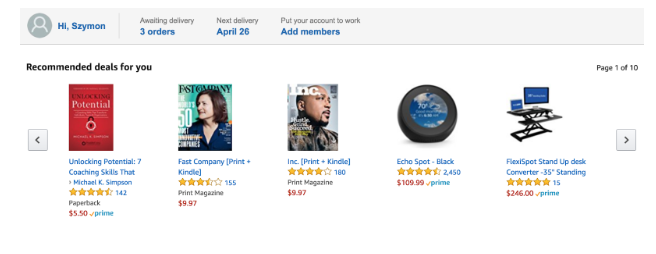
Let’s learn from traditional retailers
Retail is as old as the humankind. Around 9000 BC people used to buy goods and services in exchange for domestic animals. As you might guess, even then, people were trying to get the best price for their products.
Since then, a lot has changed. Money replaced other currency types, merchants started to sell on marketplaces and later in brick and mortar stores. Until 1995, when Amazon sold its first book via Internet, retail was redefined dozen of times.
Now, ecommerce is a still-growing sector. According to Statista, online shopping is one of the most popular online activities worldwide, and in the USA only, ecommerce revenues are projected to grow to 4.88 trillion dollars in 2021!
But the thing is, the channel may have changed, but the way people like to be treated, didn’t. Every time a customer enters a store, is it a “real” one or the online one, they want to be treated as a special guest, get all required information to make a purchase and have a chance to get a special offer.
As long as you remember it, your online shop will provide just as amazing customer experience as a in a brick and mortar store.
Have any questions about this article? Let us know in the comments!











